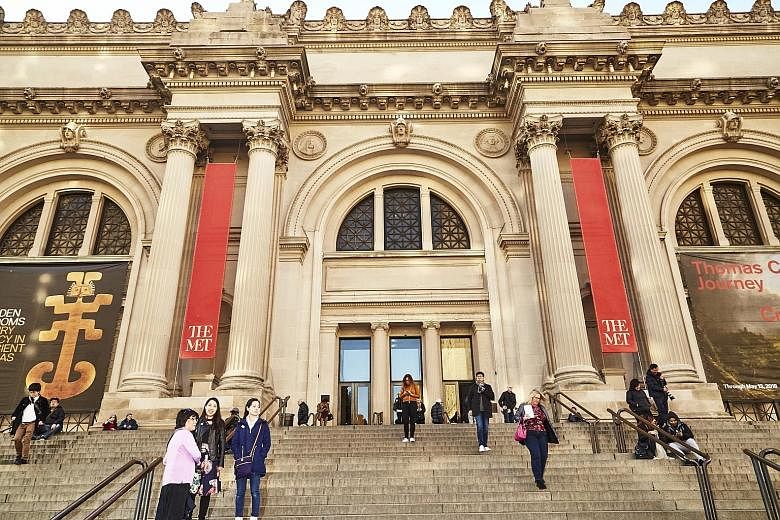NEW YORK • Artist Ai Weiwei frames the new ticket policy as akin to "taking the jacket off a poor person".
He fumes: "I will never go to the Metropolitan. Am I calling for a boycott? No. But I myself will not go."
He is giving the brush-off to the Metropolitan Museum of Art, which now requires non-residents of New York state to pay a US$25 (S$33) admission fee - a move which went into effect on Thursday.
The museum had gone to great lengths to prepare for Day One of its momentous change, from a 50-year policy of "pay what you wish", announced in January.
But it also knew that some glitches and growing pains would be inevitable.
"We worked very hard for it not to be bumpy," said Mr Daniel Weiss, its president and chief executive. "We're going to do everything we can to welcome people and move them through."
Some out-of-state visitors on Thursday were taken aback by the new mandatory admission.
"Horrible," said Mr David Walker, 34, who had come from San Francisco. "I feel caught off-guard."
After stepping up to one of the 14 new ticketing kiosks in the Great Hall, Mr Chris Gamez, from Florida, and his friend Murilo Carvalho from Brazil decided to leave.
"It's kind of a letdown," Mr Gamez said. "Maybe we'll check out another museum."
Others had not been aware of the policy change, but said they did not mind. "I agree with paying if this money is going to help the museum," said Mr Steffan AyoraDiaz, an anthropologist visiting from Mexico.
In the long term, it is far from clear whether out-of-state visitors will agreeably pay and whether impassioned opponents of mandatory admission will come to accept it.
Before the fee went into effect, Mr Weiss made a concerted effort to explain why it was necessary to bolster one of the world's largest and most renowned cultural institutions.
The proportion of visitors who pay a "suggested" amount has declined from 63 per cent to 17 per cent over the last 13 years, even as Met attendance surged to seven million from 4.7 million.
The new charge is aimed at giving the museum additional revenue of US$6 million a year.
The Met has also been girding for the logistical challenges of checking proof of residence without segregating people in a separate line as if they were second-class visitors.
The most visible changes at the museum on Thursday were the self-service kiosks and, perhaps, the noticeably smaller crowds.
There was also a new brochure that explains the fee policy, translated into 11 languages.
In the beginning, the Met will not be rigid about its new policy. Those who show up without identification will be asked to bring it next time.
Met admission fees currently provide 14 per cent of its US$305-million operating budget. That figure is expected to increase to 16 or 17 per cent - to US$49 million - with the policy change.
In approving the policy, New York City will reduce its annual subsidy to the Met and shift some of that money to cultural organisations in underserved parts of the city.
The current city subsidy of US$15 million that supports the Met's energy costs will remain intact.
An additional US$11 million, which offsets the Met's operating expenses for security and building staff, will decline on a sliding scale after the first full year, depending on how much revenue the new admissions policy generates, with a cap of US$3 million.
NYTIMES

